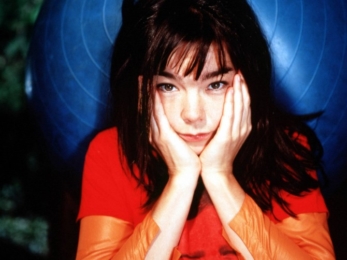
Scandinavian pop has been increasingly creating waves in the music industry. For decades, the predominantly female artists have been invading our airwaves and our top music charts with their unique musical styles as well as their visionary theatricalities.
The harsh, yet picturesque natural landscape that comes to mind when you imagine Scandinavian countries does not appear to naturally line up with their incredible worldwide success in pop music. This begs the question, when did Scandinavia develop such an astonishingly thriving pop music scene?
Pop has been a significant facet of the music scene in Scandinavian countries since the beginning of recorded music. Over time each country developed its own unique interpretations of the genre, taking influences from its own folk music as well as imported styles from America and England.

Some of the highest grossing pop musicians to come from Scandinavia include the Danish group Aqua, famous for songs that soundtracked the late 90s like “Barbie Girl” and “Doctor Jones” and the Norwegian band a-ha with their hit song from the 80’s ‘Take On Me.’
The popularity of Scandipop in the global mainstream market came in the 1970s. The most prominent band of the period was a group of four musicians from Sweden called ABBA. The group rose to fame following a win at the 1974 Eurovision song contest and became one of the most successful bands in music history.
BBC writer Andrew Harrison explains their world wide success, “If rock ‘n’ roll is about escape and outsiderdom, then Abba’s pop songs excavate the dreams and disappointments of those who never wanted to rebel… Suburbia’s hopes and dreams are no less epic and no less valid.”
ABBA’s fame grew during a time that saw the rise of highly sexualised rock and r & b culture within the mainstream, their success stemming from maintaining more conservative European values.

Carl Magnus Palm, the author of the bands biography Abba: Bright Lights, Dark Shadows described the significance of the bands Swedish background to their success. He claims that “the key to Abba is their understated Swedishness,”… there is “a melancholy Nordic streak even in Abba’s happiest songs…there’s some extra layer of sadness that you wouldn’t hear in a contemporary record.”
The success of ABBA paved the way for musicians from non-English speaking countries around the world to gain worldwide attention, especially gaining traction for their Scandinavian counterparts.
The most monumental of these artists would arguably be Björk. The monolithic experience that is Björk extends her performance beyond the auditory barriers into incredible immersive live experiences. This innovative artist is possibly the most influential pop musician to have emerged from the isolated country of Iceland within the Scandinavian pop movement. The legacy of Björk’s longstanding theatricality in her performance is already evident with the success of artists like Lady Gaga who thrive on a similar form of exhibitionism inherently connected to their music.
Björk specifically pays tribute to her Icelandic upbringing in Homogenic, in which she sought to create an album that would sound like Icelandic nature. She has expressed the way that the music, in particular the rhythm, was influenced by both her intrinsic connection with her country as well as the local music she had heard growing up. Björk has also borrowed many picturesque landscapes of her home country in the arresting video for the song “Black Lake” from the album Vulnicura.
In the past few years Scandinavian pop stars have had an insurgence of popularity in mainstream music. Ethereal pop stars like Aurora, Lykke LI, Robyn, MØ and Purity Ring have been emerging from the area as if from a dream.

Norwegian artist Dagny, known for her pumping, dance songs “Fool’s Gold” and “Backbeat” has explained the pop phenomenon in Scandinavia: “Pop is in the water and comes out in great songs.”
Other artists have provided their own explanations, providing clues as to why Scandinavia seems to endlessly produce fantastical females that appear to effortlessly dominate the music industry. Swedish singer-songwriter MY explains the impact of culture on their music saying, “There are great opportunities growing up here with public music schools, loads of studios and government-funded programmes so kids can learn music. It’s a great start. And we’ve got so many female role models, great pop writers. There’s a lot of equality here.”
In any case, Scandinavian pop music has played a key role in shaping the worldwide pop music scene since it first exploded upon the scene with ABBA. The genre with its unique sound, visual experiences, lyrical concepts as well as the characters of the (mostly) women headlining the genre, Scandinavian pop music will no doubt continue to spearhead the development of pop music for years to come.







